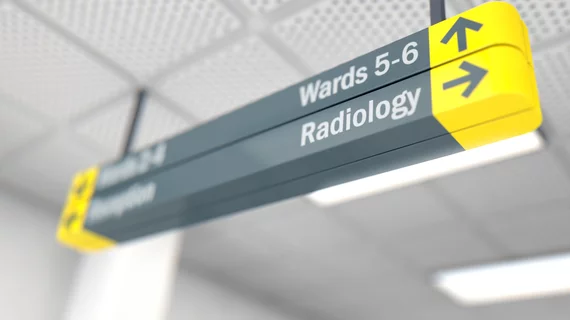What causes variation in follow-up imaging recommendations among radiologists?
There is wide-ranging variation among radiologists in recommending a follow-up exam in a radiology report, according to a new study published in Radiology. But what causes the discrepancy?
“Previous studies performed at single institutions and in single subspecialty divisions have suggested that radiologist experience may be associated with fewer follow-up recommendations,” wrote first author Laila R. Cochon, MD, of Harvard Medical School in Boston, and colleagues. “However, it remains poorly understood how much radiologists vary when recommending additional imaging and what additional radiologists and other factors influence the likelihood of additional imaging.”
To gain a better understanding, researchers from the Center for Evidence-Based Imaging, Department of Radiology at Brigham and Women’s Hospital at Harvard created a machine learning algorithm to analyze more than 318,000 radiology reports from multiple modalities, settings and imaging divisions within a single institution. Breast and ultrasound reports were excluded.
Cochon et al. randomly selected 1,000 reports and manually annotated them to train and validate their algorithm to predict if a report included a follow-up recommendation.
Results revealed a 12.2% follow-up recommendation rate. There was significant variation among the 65 radiologists depending on the subspecialty division of the reader, ranging from 2.8 to 6.7 fold. Multivariable analysis found radiologists were more likely to recommend follow-up imaging for older patients and CT studies; they were less likely to do so for male patients.
The sex, presence of a trainee and years in practice were not significant predictors of higher follow-up recommendation rates.
“Our findings suggest that the same diagnostic finding may yield different follow-up recommendations depending on the radiologist reading the images, which could result in important implications for patient care, the authors wrote.
Because clinical responsibilities reduce time for direct in-person consultation, nonstandardized follow-up recommendations may contribute to ambiguity and suboptimal clinical decision making by referring providers, compromise patient care, and raise costs.”
The current study refutes previous research which found more experienced radiologists made less follow-up recommendations. There could be multiple reasons for this, the authors noted, which may be attributed to different institutions studied, varying time periods and more reports analyzed in past studies.
In a related editorial, Eric J. Russell, MD, of the Feinberg School of Medicine, Northwestern University in Chicago stressed the importance of recognizing variations in follow-up ordering as a problem, and suggested future efforts should focus on a mixture of common rules and technology to rectify the discrepancy.
“Future efforts to improve the uniformity of recommendations may be aided by better distribution and use of common rules, such as the Fleischner criteria for pulmonary nodules and rules aimed at reducing the high variability in recommendations for imaging follow-up for thyroid nodules,” Russell noted. “Artificial intelligence and deep learning may be helpful in continually analyzing the success of developed strategies.”

